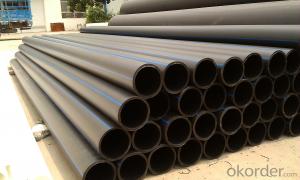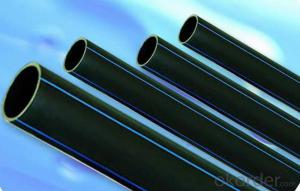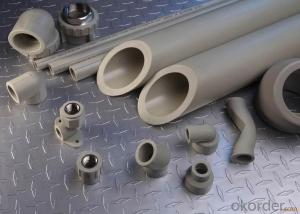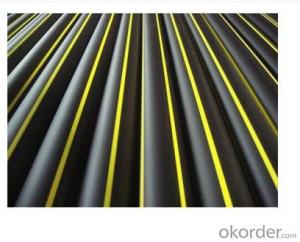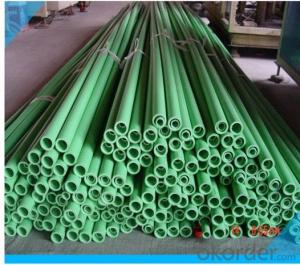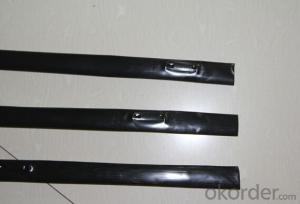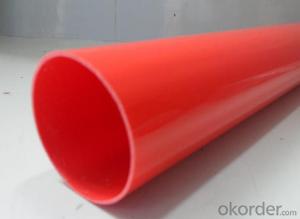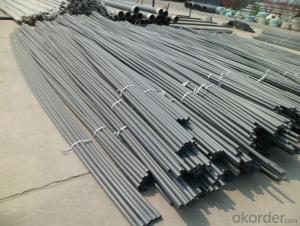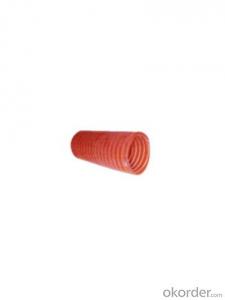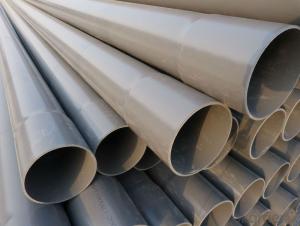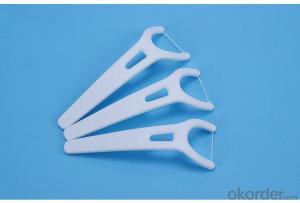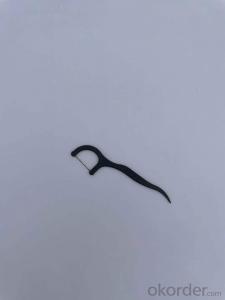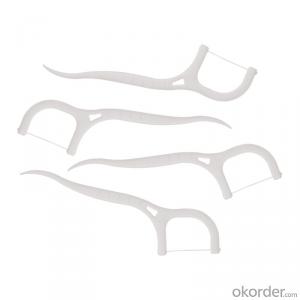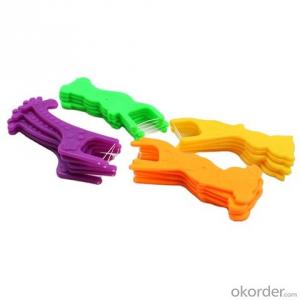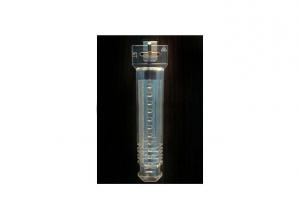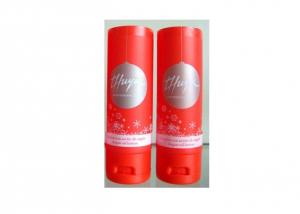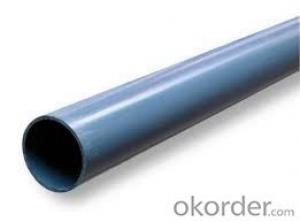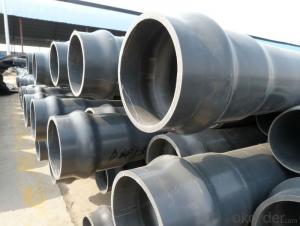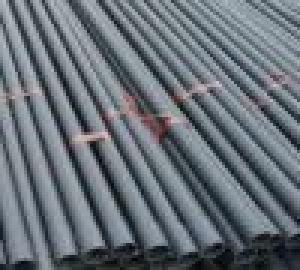HDPE PIPE 80
- Loading Port:
- China Main Port
- Payment Terms:
- TT OR LC
- Min Order Qty:
- -
- Supply Capability:
- -
OKorder Service Pledge
OKorder Financial Service
You Might Also Like
Physical properties[edit]
Polyethylene is a thermoplasticpolymer consisting of long hydrocarbon chains. Depending on the crystallinity and molecular weight, a melting point and glass transition may or may not be observable. The temperature at which these occur varies strongly with the type of polyethylene. For common commercial grades of medium- and high-density polyethylene the melting point is typically in the range 120 to 180 °C (248 to 356 °F). The melting point for average, commercial, low-density polyethylene is typically 105 to 115 °C (221 to 239 °F).it is transprant.
Chemical properties[edit]
Most LDPE, MDPE and HDPE grades have excellent chemical resistance, meaning that it is not attacked by strong acids or strong bases. It is also resistant to gentle oxidants and reducing agents. Polyethylene burns slowly with a blue flame having a yellow tip and gives off an odour of paraffin. The material continues burning on removal of the flame source and produces a drip.[3] Crystalline samples do not dissolve at room temperature. Polyethylene (other than cross-linked polyethylene) usually can be dissolved at elevated temperatures in aromatic hydrocarbons such as toluene or xylene, or in chlorinated solvents such as trichloroethane or trichlorobenzene.[4]
GB/T13663-2000:
| PE63管材规格 | |||||
| 公称 外径dn,mm | SDR33 | SDR26 | SDR17.6 | SDR13.6 | SDR11 |
| 公称压力 PN,Mpa | |||||
| 0.32 | 0.4 | 0.6 | 0.8 | 1.0 | |
| 公称 壁厚 | 公称 壁厚 | 公称 壁厚 | 公称 壁厚 | 公称 壁厚 | |
| 16 | 2.3 | ||||
| 20 | 2.3 | 2.3 | |||
| 25 | 2.3 | 2.3 | 2.3 | ||
| 32 | 2.3 | 2.4 | 2.9 | ||
| 40 | 2.3 | 2.3 | 3.0 | 3.7 | |
| 50 | 2.3 | 2.9 | 3.7 | 4.6 | |
| 63 | 2.3 | 2.5 | 3.6 | 4.7 | 5.8 |
| 75 | 2.3 | 2.9 | 4.3 | 5.6 | 6.8 |
| 90 | 2.8 | 3.5 | 5.1 | 6.7 | 8.2 |
| 110 | 3.4 | 4.2 | 6.3 | 8.1 | 10.0 |
| 125 | 3.9 | 4.8 | 7.1 | 9.2 | 11.4 |
| 140 | 4.3 | 5.4 | 8.0 | 10.3 | 12.7 |
| 160 | 4.9 | 6.2 | 9.1 | 11.8 | 14.6 |
| 180 | 5.5 | 6.9 | 10.2 | 13.3 | 16.4 |
| 200 | 6.2 | 7.7 | 11.4 | 14.7 | 18.2 |
| 225 | 6.9 | 8.6 | 12.8 | 16.6 | 20.5 |
| 250 | 7.7 | 9.6 | 14.2 | 18.4 | 22.7 |
| 280 | 8.6 | 10.7 | 15.9 | 20.6 | 25.4 |
| 315 | 9.7 | 12.1 | 17.9 | 23.2 | 28.6 |
| 355 | 10.9 | 13.6 | 20.1 | 26.1 | 32.2 |
| 400 | 12.3 | 15.3 | 22.7 | 29.4 | 36.3 |
| 450 | 13.8 | 17.2 | 25.5 | 33.1 | 40.9 |
| 500 | 15.3 | 19.1 | 28.3 | 36.8 | 45.4 |
| 560 | 17.2 | 21.4 | 31.7 | 41.2 | 50.8 |
| 630 | 19.3 | 24.1 | 35.7 | 46.3 | 57.2 |
- Q:Are plastic tubes resistant to chemicals?
- Yes, plastic tubes are generally resistant to chemicals. However, the level of resistance can vary depending on the type of plastic used and the specific chemical involved.
- Q:What is the minimum wall thickness for plastic tubes?
- The minimum wall thickness for plastic tubes depends on various factors such as the type of plastic, the intended application, and the manufacturing process. However, in general, plastic tubes can have a minimum wall thickness ranging from 0.5mm to 1mm.
- Q:Are plastic tubes transparent?
- Yes, plastic tubes can be transparent.
- Q:What are the requirements for quality inspection of plastic pipes?
- Very pleased to see the pro question, purple meteor dating team actively answer for you, I hope to help you, I wish you a happy life, useful, hope to adoptMaterial, hardness, corrosion resistance
- Q:Is the writing method of plastic pipes DN or De? What does that mean?
- De (nominal outside diameter) *e (nominal wall thickness) is the seamless pipe representation. The plastic pipe shall be expressed as de (nominal outer diameter) *e (nominal wall thickness).
- Q:Are plastic tubes suitable for use in the automotive industry?
- Yes, plastic tubes are suitable for use in the automotive industry. They offer advantages such as flexibility, corrosion resistance, and lighter weight compared to metal tubes. Plastic tubes are commonly used in various applications within vehicles, including fuel lines, coolant systems, and air intake systems.
- Q:What are the differences between rigid flame retardant pipes and semi rigid flame retardant plastic tubes? Who knows?
- Flame retardant plastic corrugated pipe, plasticizer, stabilizer and flame retardant by extrusion molding and made of PVC resin, inner and outer walls are corrugated for wire protection, the general color is yellow, red, white, with a special joint pipe connection with plastic pipe bend after bonding, without heating, bundles the supply of each bundle of 100 meters.
- Q:Are plastic tubes suitable for DIY crafts?
- Yes, plastic tubes can be suitable for DIY crafts. They are lightweight, versatile, and come in various sizes and shapes, making them ideal for a wide range of craft projects. Plastic tubes can be easily cut, painted, glued, and decorated, allowing for endless possibilities in creating unique and creative crafts.
- Q:Where is the orifice tube located in a 2000 Pontiac Grand Prix3.8 liter V-6
- Recover the refrigerant. Refer to Refrigerant Recovery and Recharging . Remove the engine air cleaner. Refer to Air Cleaner Assembly Replacement in Engine Controls--3.1L or Air Cleaner Assembly Replacement in Engine Controls--3.8L. Remove the vacuum brake booster. Refer to Power Vacuum Brake Booster Replacement in Hydraulic Brakes. Remove the condenser tube. Refer to Condenser Tube Replacement . Remove the expansion (orifice) tube: 5.1. Use needle-nose pliers in order to grip the orifice tube. 5.2. Use a turning motion along with a push-pull motion in order to loosen the impacted orifice tube. 5.3. Remove the orifice tube. Important: DO NOT use any solvents or chemicals to clean the expansion (orifice) tube porous plastic inlet filter. Inspect the expansion (orifice) tube for the following conditions and clean or replace with a new tube as indicated: ? Broken plastic frame (1) ; replace tube. ? Inlet filter (3) damaged or plugged with fine gritty material; replace tube. ? Inlet filter (3) coated with metal chips, flakes, or slivers; coating may be removed with low pressure shop air ONLY and reused if cleaned satisfactorily. ? If reusing the tube, discard the O-ring seals (2). Installation Procedure
- Q:Can plastic tubes be used for gardening or irrigation purposes?
- Yes, plastic tubes can be used for gardening or irrigation purposes. They are commonly used as a cost-effective and efficient way to transport water to plants, whether it's for watering gardens, lawns, or crop fields. Plastic tubes are lightweight, durable, and can withstand different weather conditions, making them a popular choice for irrigation systems in both residential and commercial settings.
1. Manufacturer Overview |
|
|---|---|
| Location | |
| Year Established | |
| Annual Output Value | |
| Main Markets | |
| Company Certifications | |
2. Manufacturer Certificates |
|
|---|---|
| a) Certification Name | |
| Range | |
| Reference | |
| Validity Period | |
3. Manufacturer Capability |
|
|---|---|
| a)Trade Capacity | |
| Nearest Port | |
| Export Percentage | |
| No.of Employees in Trade Department | |
| Language Spoken: | |
| b)Factory Information | |
| Factory Size: | |
| No. of Production Lines | |
| Contract Manufacturing | |
| Product Price Range | |
Send your message to us
HDPE PIPE 80
- Loading Port:
- China Main Port
- Payment Terms:
- TT OR LC
- Min Order Qty:
- -
- Supply Capability:
- -
OKorder Service Pledge
OKorder Financial Service
Similar products
New products
Hot products
Hot Searches
Related keywords
